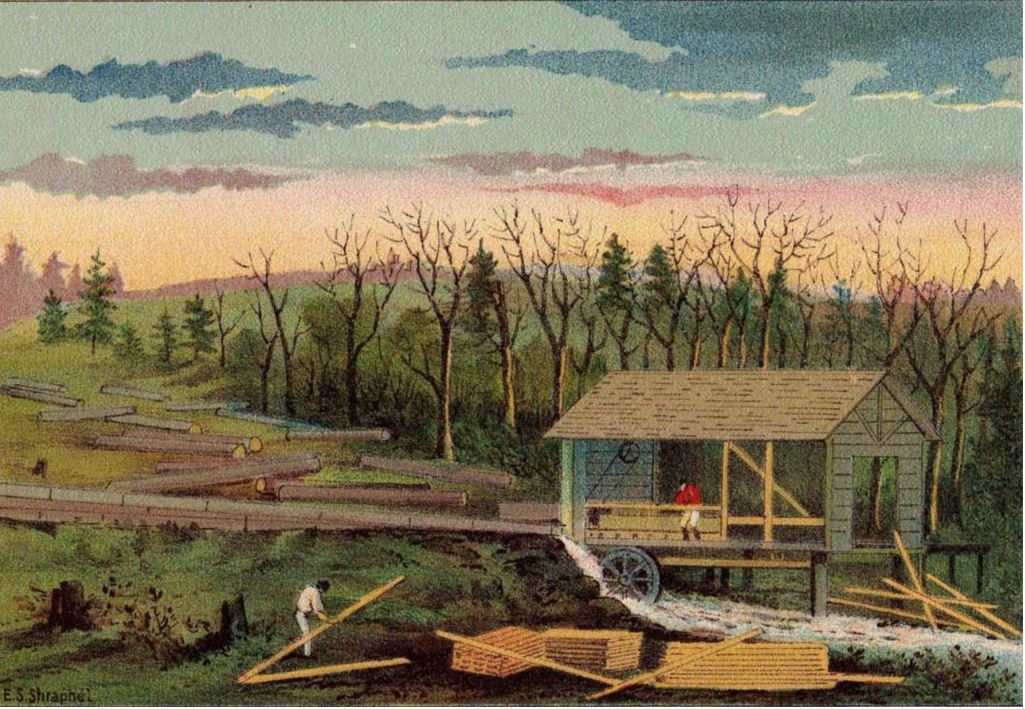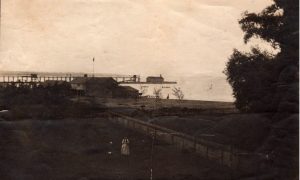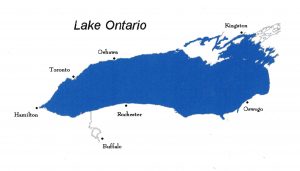Oshawa, The Manchester of Canada

1898 painting of Daniel Conant and David Annis formed a business partnership that included a sawmill where the lumber was floated down the creek (todays Oshawa Creek) on rafts and on the east side of the present harbour.
For more than a half-century, sailors on the Great Lakes already knew Oshawa had a nickname. It was dubbed the “Manchester of Canada.” Oshawa was recognized as a community with a rich history of industrial growth. The development of numerous manufacturing establishments in the area sparked comparisons to the industrial city of Manchester in England. The history of Oshawa’s identification as an industrial town begins at the lakefront, as it was the area best suited for transportation and communication. Businesses started to pop up around the harbour and continued along Oshawa Creek. As the industries prospered and grew, the area saw increased settlement and employment opportunities.
By the early 1850s, Port Oshawa had become a major anchorage, with piers and a breakwater to protect ships that called for cargoes of barley and manufactured goods, in what was then the second largest grain-producing region of Canada West.
As a growing centre of industry and commerce, it was essential that Oshawa’s manufactured goods be quickly transported to markets elsewhere, meaning population centres on both sides of Lake Ontario. Across the lake, trade brought Oswego, Buffalo and Rochester closer to Oshawa, and extensive coastwise trade was carried on as far as Kingston. Items that were shipped out from Oshawa Harbour included a celebrated brand of flour, for which Oshawa was famed; it was known as “Plow” and went out to markets around the world.
Prior to railroads and good roads on land, sailing ships prevailed. Shipping was a viable enterprise at Oshawa Harbour, both in the 1830s and the 1850s. The ships that were built were sturdy and well constructed, and they were an active part of the commerce of that period.



